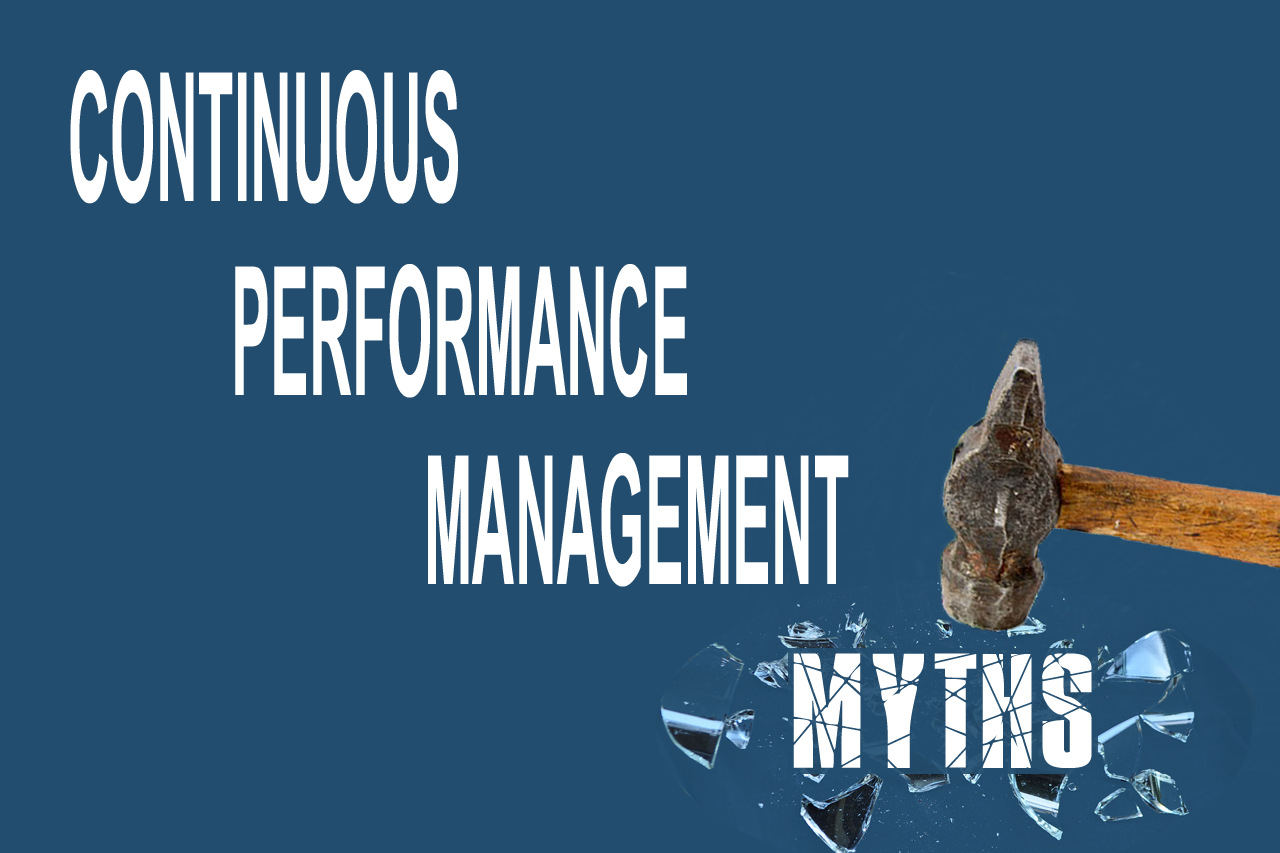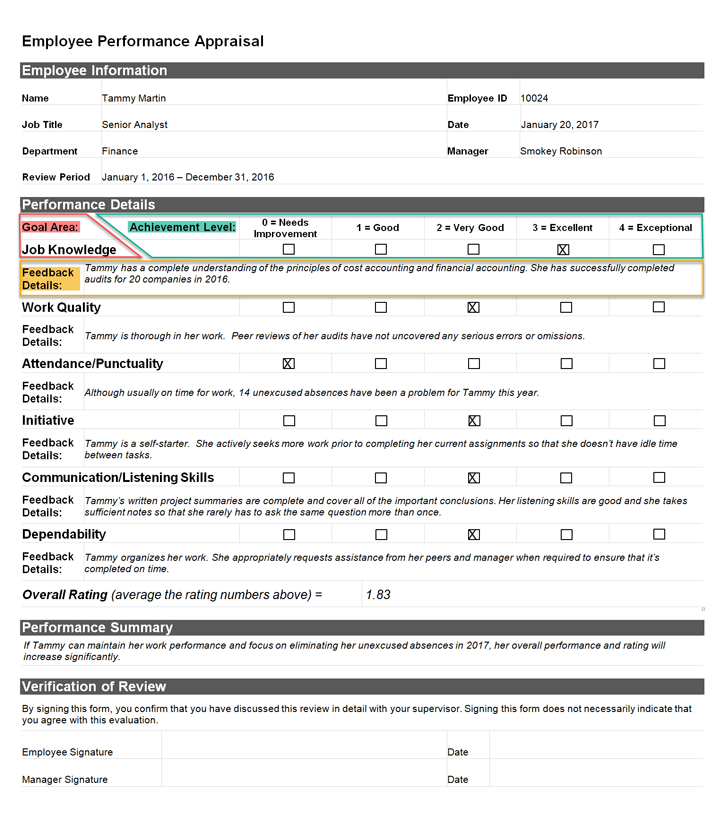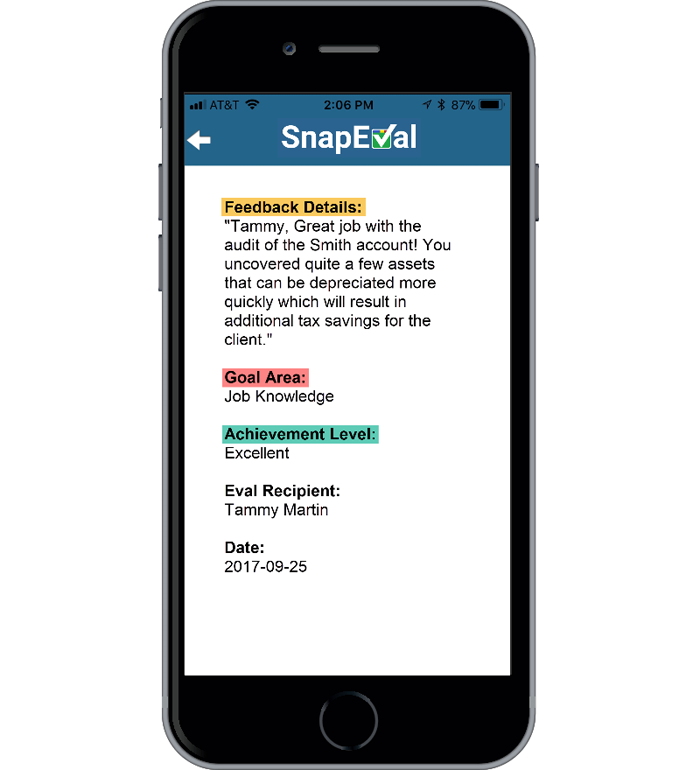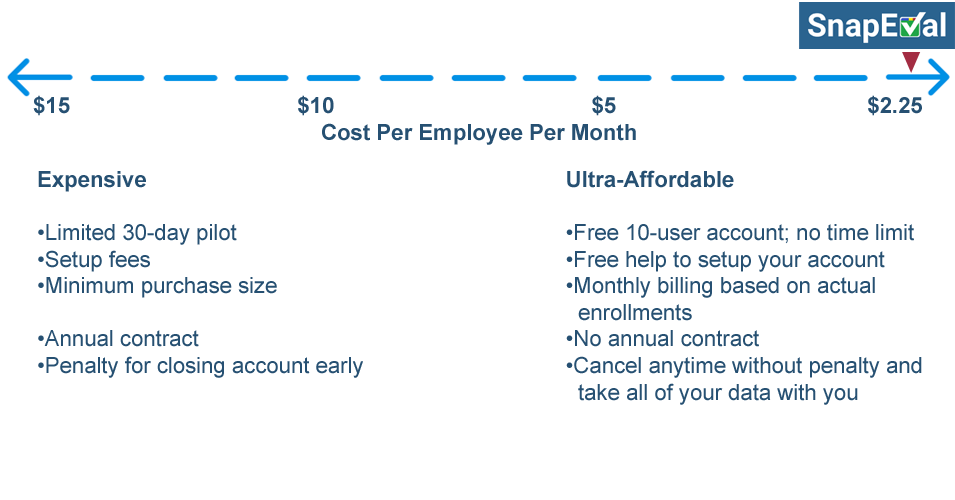
Here are the Five Continuous Performance Management Myths that need to be Shattered!
Many organizations are investigating Continuous Performance Management as a process to provide their employees with frequent feedback about their performance. Because it’s a relatively new approach to Performance Management, myths about selecting and implementing a Continuous Performance Management solution abound.
Continuous Performance Management Myths – #1: Implementing a Continuous Performance Management solution always requires a risky cultural transformation.
Shattered! Just like there are different flavors of ice cream, there are also different types of Continuous Performance Management solutions. The type of solution selected and the organization’s current culture will determine how much cultural change (if any) is required.
Ideally, an organization’s culture should support the organization’s objectives. If it doesn’t, then a cultural transformation initiative is called for. But be forewarned, cultural transformation is very difficult, risky, and fails about 70% of the time!1
For this reason, it’s important to select a Continuous Performance Management solution that fits the culture and workflow needs of the organization, rather than attempting to re-engineer an organization’s culture simply to implement Continuous Performance Management.
An ideal Continuous Performance Management solution should support an organization’s real work environment and optimal job workflows. Here are a few questions to ask when evaluating solutions:
- Are managers the only ones with access to computers and/or smartphones, or can employees also use them while on the job?
- Does management want to track employee progress against quantitative goals and objectives, or is capturing performance with the familiar elements of goals, achievement levels, and feedback details as used in traditional performance appraisals preferable?
- Would frequently tracking progress against goals and tracking results negatively impact normal job workflows for managers and/or employees?
Continuous Performance Management solutions based on OKRs (Objectives and Key Results) may be a good fit for organizations that want to:
- Track employee progress against quantitative goals and objectives
- Integrate frequent goal setting and tracking deeply into manager and employee workflows
A requirement for OKRs is that all managers and employees have access to smartphones and/or computers. For most organizations, implementation of Continuous Performance Management solutions based on OKRs requires a large cultural transformation.
Continuous Performance Management solutions based on easy-to-capture ‘feedback snapshots’ using the familiar elements of goals, achievement levels, and feedback details are a good fit for organizations that want minimal impact on existing manager and employee workflows. Some of these solutions can support organizations where employees don’t have access to smartphones or computers. Because this type of Continuous Performance Management typically requires little or no cultural transformation, it’s very low risk to implement.
No matter what type of Continuous Performance Management solution is selected, it’s critical that the process and technology to capture and share ongoing feedback is extremely simple, easy to use, and fast. If it’s not, managers and employees won’t use it, and the implementation will fail.
The SnapEval mobile app and web portal enables managers to capture ‘Feedback Snapshots’ using the same goals, achievement levels, and feedback details elements as used in traditional Employee Performance Appraisals. Managers can aggregate these individual Feedback Snapshots into ‘Performance Summaries’ for their assigned employees. A Performance Summary is identical to a traditional Employee Performance Appraisal in structure, except that it also includes these selected Feedback Snapshots. HR Professionals have comprehensive visibility to and control of Feedback Snapshots and Performance Summaries in the SnapEval web portal dashboard.


Continuous Performance Management Myths – #2: Continuous Performance Management always replaces annual reviews.
Shattered again! Many organizations continue to use quarterly, semi-annual, and/or annual performance appraisals in conjunction with the ongoing feedback enabled by Continuous Performance Management. These appraisals are the formal documentation used for merit-based pay increases, promotions, and other purposes.
The key is that some Continuous Performance Management solutions are more compatible with these traditional formal review methods than others. Solutions that enable managers to aggregate ‘feedback snapshots’ based on the familiar elements of goals, achievement levels, and feedback details into quarterly, semi-annual, or annual summaries are the most compatible with traditional performance reviews.
Continuous Performance Management Myths – #3: Continuous Performance Management only works in large organizations.
Shattered! Just like payroll and other software products, different Continuous Performance Management solutions are also optimized for large, mid-sized, or small organizations.
If your organization is large, you’ll want a product with the features and options to accommodate the complexity of your organization’s scale.
If your organization is mid-sized or small, selecting a product that’s designed for your organization’s size will minimize unnecessary costs, configuration, and ongoing administration.
Continuous Performance Management Myths – #4: It’s always best to introduce Continuous Performance Management after the completion of the organization’s current annual review cycle.
Also shattered! Deploying a Continuous Performance Management solution that is highly compatible with traditional performance reviews can be done anytime! The sooner the solution is deployed, the larger the amount of valuable feedback managers will have to incorporate into their next Quarterly, Semi-Annual, or Annual Performance Appraisals.
Continuous Performance Management Myths – #5: Continuous Performance Management solutions are always expensive with large upfront costs and long-term commitments.
Absolutely shattered! While it’s true that the majority of Continuous Performance Management solutions are expensive, with setup costs and contracts that require a full year’s subscription payment upfront, there are exceptions. Here’s what to look for:
A vendor that’s a true partner to your organization should bear 100% of the financial risk for a successful evaluation, pilot, and implementation of the technology. This means:
- No upfront costs such as ‘startup’ or ‘configuration’ fees. The vendor should assist with configuration, without cost or obligation.
- No commitments, such as an annual contract.
- No 30-day limited trial period. You should be able to deploy the fully functional software to a pilot team for an unlimited period of time.
- You should not be pressured into making a decision to deploy until you’re fully satisfied that the technology will support all areas within your organization.
Then, if you decide to proceed with a full-scale deployment, there should be absolutely no contract or requirement to pay for a year’s subscription upfront.
- Aggressively-priced, full-featured Continuous Performance Management solutions cost as little as $2.25 per enrolled user per month.
- You should only be charged monthly based on the actual number of users enrolled in the tool that month.
- You should be allowed to cancel at any time and to take all of your data with you, without penalty.
I hope that shattering these myths has helped you to rethink Continuous Performance Management for your organization. If you have any questions about how SnapEval can fit your company’s needs, please contact us at Support@SnapEval.com.
I’m David Yeaple, VP of Business Development and Product Management at SnapEval, LLC. I’d love to get your feedback about this blog, our products, or anything else related to employee performance management. You can reach me at dyeaple@SnapEval.com or +1 585-414-5000.
1http://www.mckinsey.com/global-themes/leadership/changing-change-management





